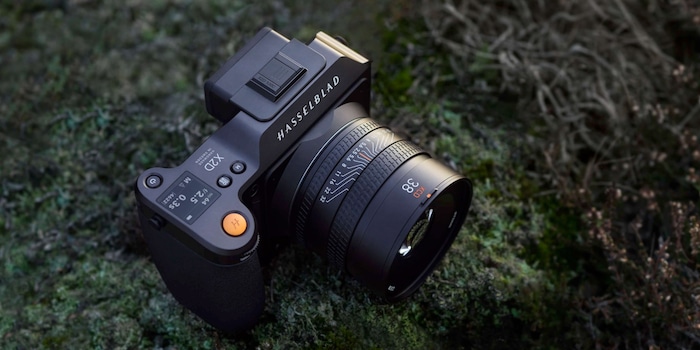
100 Megapixels: Hasselblad introduces X2D and three new lenses
The new Hasselblad X2D medium format camera comes with 100 megapixels, better autofocus, in-body image stabiliser and a terabyte of internal memory. With a price of almost 9000 Swiss francs, it is clearly in the premium segment.
Hasselblad has introduced a new mirrorless medium format camera. The X2D has a resolution of 100 megapixels and addresses many weaknesses of its predecessor, the X1D II. The autofocus now comes with face detection and is said to be much more responsive. A new image stabiliser is built into the body, which allows up to seven stops longer handheld exposures. To make room for it, the housing has become slightly larger, but the design has remained the same. Along with the camera, Hasselblad has introduced three new lenses: the XCD 2.5/38V, the XCD 2.5/55V and the XCD 2.5/90V.
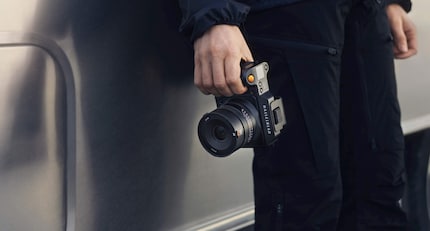
Thicker and with flip-up display
The Swedes have made few changes to the design. The camera is still made of solid aluminium, and the shape of the X2D is the same as that of the X1D II. However, it is slightly thicker and taller to accommodate the new in-body image stabiliser. Hasselblad has added a top screen to the X2D's larger top surface. In exchange, the retractable selector wheel of the predecessor has disappeared.
The display on the back is also new: it can be folded upwards, but not to the side. The resolution has remained the same at 2.36 megapixels. The optical viewfinder is remarkable. Its OLED display has a resolution of 5.76 megapixels and a magnification of 1.0. This is significantly more than the viewfinder of its direct competitor, the Fujifilm GFX 100S.
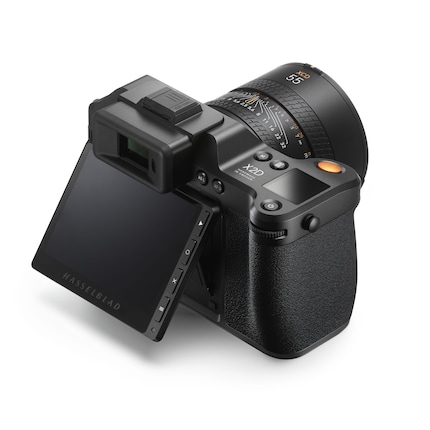
.
16 bit colour depth, 15 stops dynamic range
The X2D's sensor resolves at just under 102 megapixels. It is likely to be the same Sony-produced sensor used in the Fujifilm GFX 100S. It measures 43.8 x 32.9 mm, which is about 70 per cent larger than a full-frame sensor. Sensitivity ranges from ISO 64 to ISO 25 600.
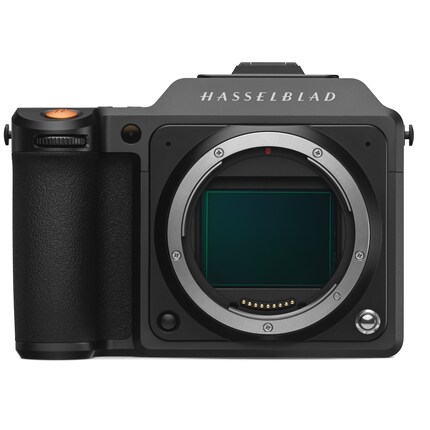
Much more important, however, are colour depth and dynamic range: Hasselblad specifies a colour depth of 16 bits and a dynamic range of 15 stops. In continuous shooting mode, the colour depth drops to 14 bits. The cameras of the Swedish manufacturer are known for natural skin tones. This is supposed to be no different with the X2D. The disadvantage of the high image quality: a RAW file is on average 206 megabytes in size.
New autofocus with face detection
The X2D has a phase-detection autofocus with 294 zones. This is a significant improvement over the previous model. This had only a comparatively slow contrast-based autofocus, which made the camera sluggish in practice. The new focus is said to be three times faster and can cover 97 per cent of the image. In addition to better speed, the X2D finally also has face detection, catching up with Fujifilm's competitors.
In other respects, too, the camera is said to have a face detection function.
The new camera is also said to feel faster than its predecessor in other respects. Hasselblad talks of 65 per cent less shutter lag and a 70 per cent shorter blackout time. Continuous shooting speed has increased slightly to 3.3 frames per second, but remains below that of the Fujifilm, which manages five frames per second.
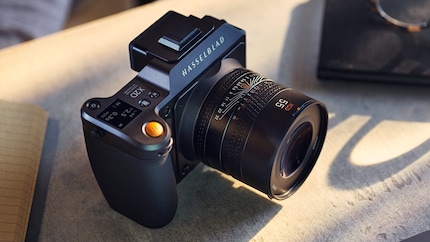
.
IBIS, better battery, 1 TB internal storage
The new in-body image stabiliser (IBIS) compensates for camera shake by up to seven stops. That's one more than the Fujifilm GFX 100S. Hasselblad has greatly improved the battery. It provides power for up to 420 pictures, the old one was empty after only 180. The Fujifilm, however, manages 460 photos per battery charge. A first in the medium format sector is the internal memory of the X2D. It is one terabyte in size and can store about 5000 images. In addition, the camera has a CFexpress card slot.
Three new lenses
In addition to the X2D, Hasselblad has introduced three new lenses: the XCD 2.5/38V, the XCD 2.5/55V and the XCD 2.5/90V. All three have a maximum aperture of 2.5 and a leaf shutter. A new feature is a selector ring to which various functions can be assigned. The focus ring can be slid backwards and forwards, thus switching the lenses between manual and automatic focus.
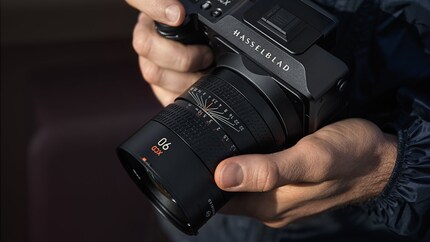
Hasselblad-level price
The Hasselblad X2D costs 8995 francs at launch. This is over 3000 francs more than the price of the Fujifilm GFX 100S. The new lenses cost 4195 (XCD 2.5/38V and XCD 2.5/55V) and 4795 Swiss francs (XCD 2.5/90V) respectively. For the first time, Hasselblad delivers a state-of-the-art camera that focuses exclusively on photography, at least on paper, for the hefty price. The X2D does not have a video mode. I will test whether it lives up to its premium price in practice as soon as I get my hands on it.
My fingerprint often changes so drastically that my MacBook doesn't recognise it anymore. The reason? If I'm not clinging to a monitor or camera, I'm probably clinging to a rockface by the tips of my fingers.